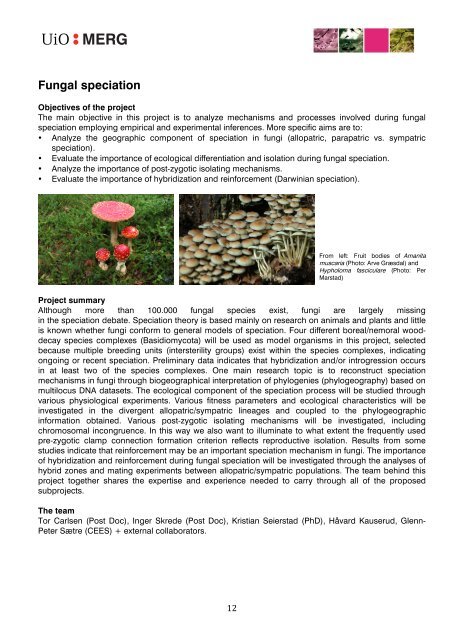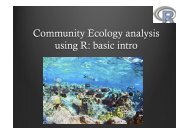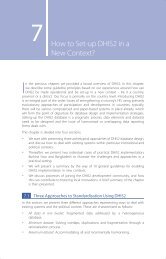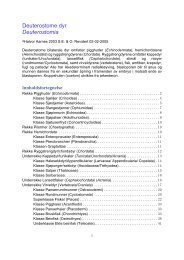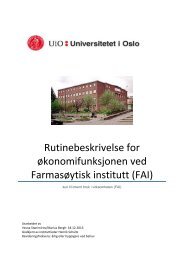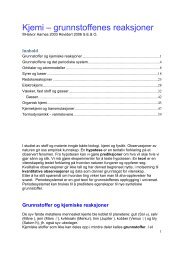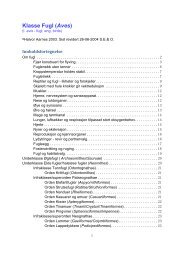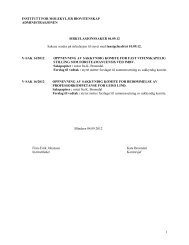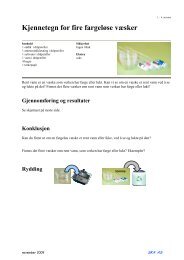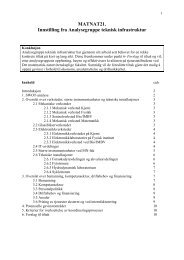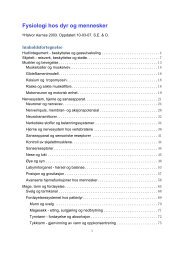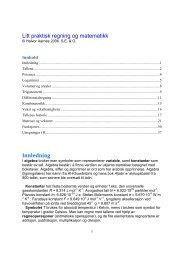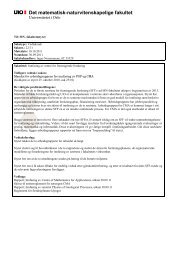MERG - Universitetet i Oslo
MERG - Universitetet i Oslo
MERG - Universitetet i Oslo
You also want an ePaper? Increase the reach of your titles
YUMPU automatically turns print PDFs into web optimized ePapers that Google loves.
<strong>MERG</strong><br />
Fungal speciation<br />
Objectives of the project<br />
The main objective in this project is to analyze mechanisms and processes involved during fungal<br />
speciation employing empirical and experimental inferences. More specific aims are to:<br />
• Analyze the geographic component of speciation in fungi (allopatric, parapatric vs. sympatric<br />
speciation).<br />
• Evaluate the importance of ecological differentiation and isolation during fungal speciation.<br />
• Analyze the importance of post-zygotic isolating mechanisms.<br />
• Evaluate the importance of hybridization and reinforcement (Darwinian speciation).<br />
Project summary<br />
Although more than 100.000 fungal species exist, fungi are largely missing<br />
in the speciation debate. Speciation theory is based mainly on research on animals and plants and little<br />
is known whether fungi conform to general models of speciation. Four different boreal/nemoral wooddecay<br />
species complexes (Basidiomycota) will be used as model organisms in this project, selected<br />
because multiple breeding units (intersterility groups) exist within the species complexes, indicating<br />
ongoing or recent speciation. Preliminary data indicates that hybridization and/or introgression occurs<br />
in at least two of the species complexes. One main research topic is to reconstruct speciation<br />
mechanisms in fungi through biogeographical interpretation of phylogenies (phylogeography) based on<br />
multilocus DNA datasets. The ecological component of the speciation process will be studied through<br />
various physiological experiments. Various fitness parameters and ecological characteristics will be<br />
investigated in the divergent allopatric/sympatric lineages and coupled to the phylogeographic<br />
information obtained. Various post-zygotic isolating mechanisms will be investigated, including<br />
chromosomal incongruence. In this way we also want to illuminate to what extent the frequently used<br />
pre-zygotic clamp connection formation criterion reflects reproductive isolation. Results from some<br />
studies indicate that reinforcement may be an important speciation mechanism in fungi. The importance<br />
of hybridization and reinforcement during fungal speciation will be investigated through the analyses of<br />
hybrid zones and mating experiments between allopatric/sympatric populations. The team behind this<br />
project together shares the expertise and experience needed to carry through all of the proposed<br />
subprojects.<br />
The team<br />
Tor Carlsen (Post Doc), Inger Skrede (Post Doc), Kristian Seierstad (PhD), Håvard Kauserud, Glenn-<br />
Peter Sætre (CEES) + external collaborators.<br />
12<br />
From left: Fruit bodies of Amanita<br />
muscaria (Photo: Arve Græsdal) and<br />
Hypholoma fasciculare (Photo: Per<br />
Marstad)


